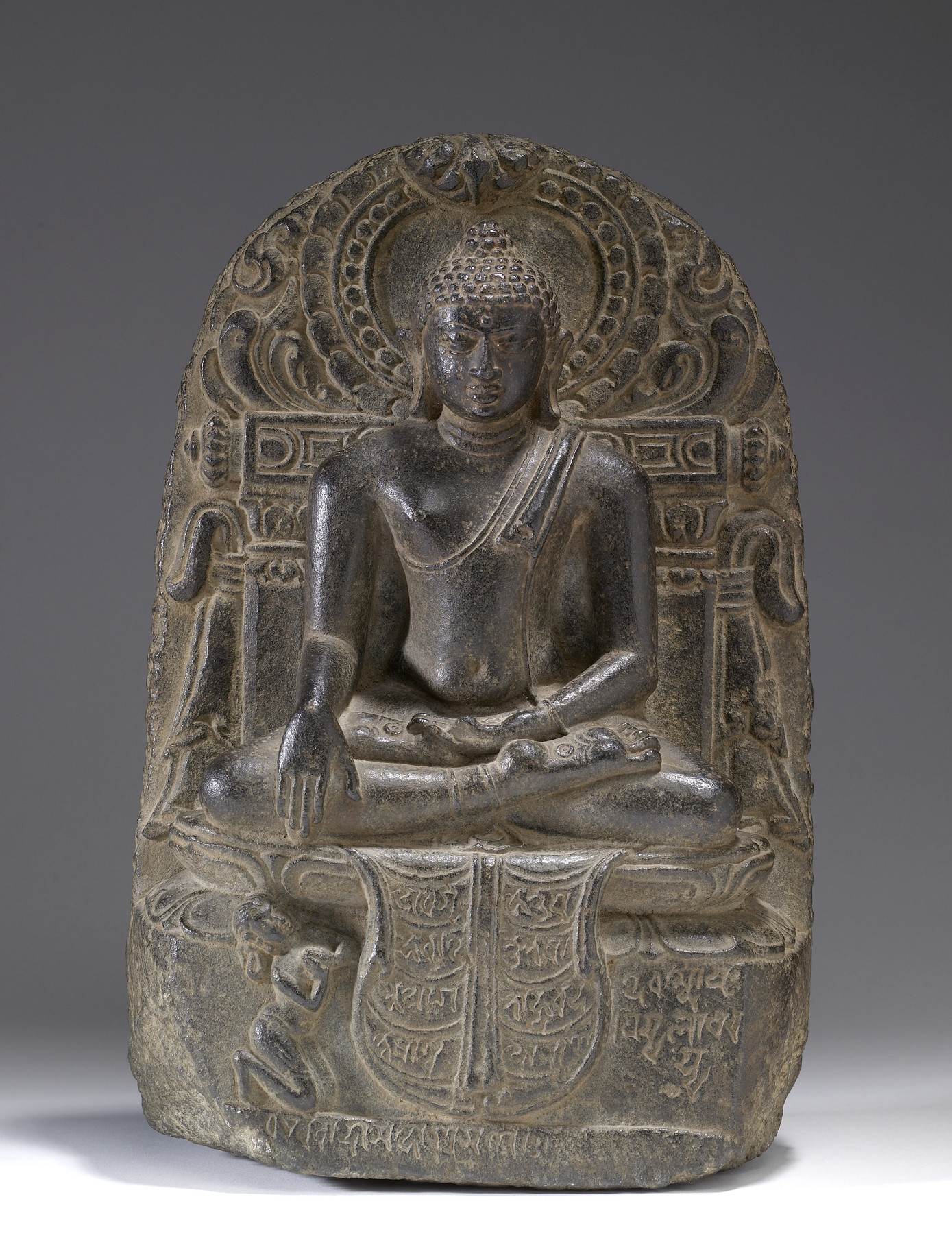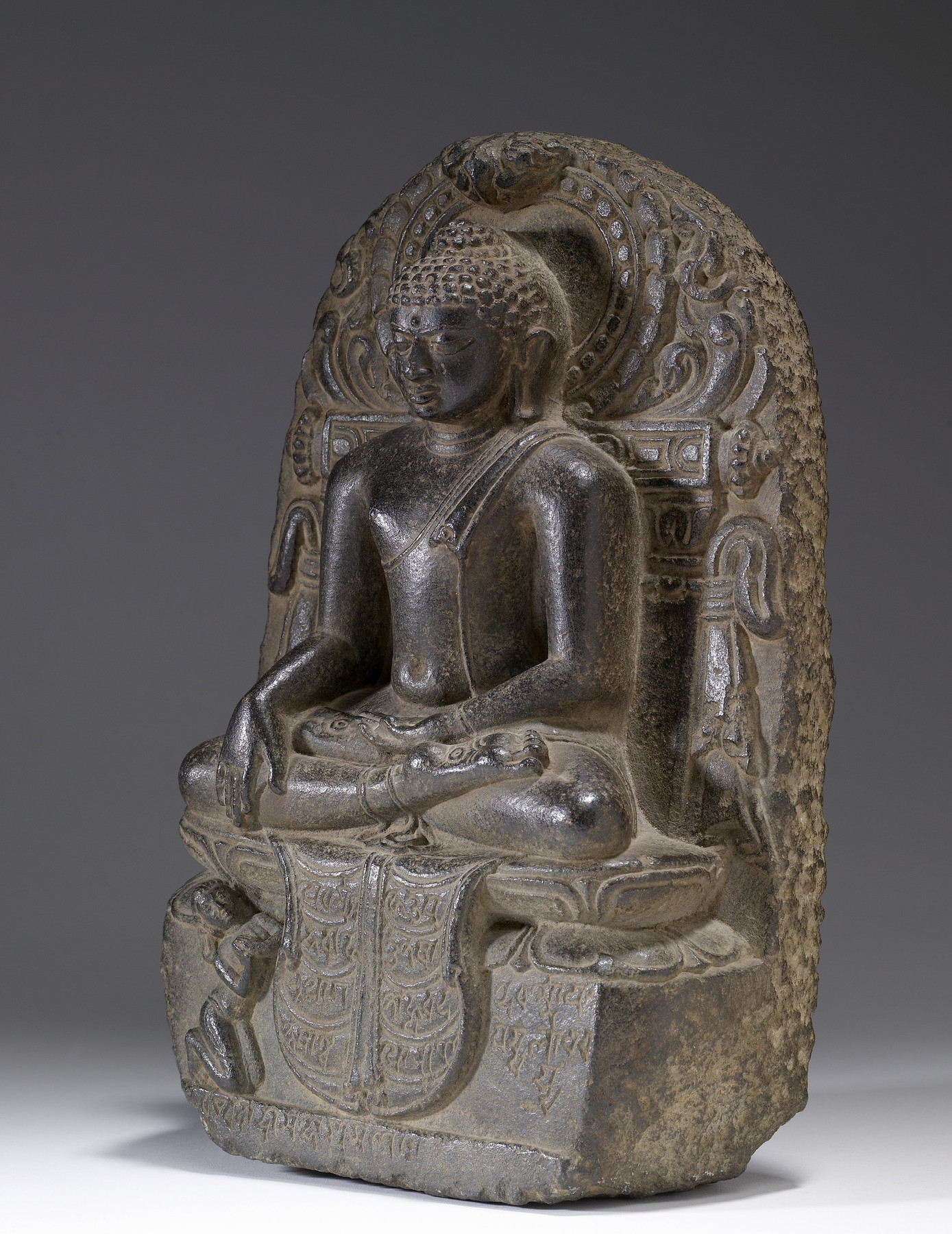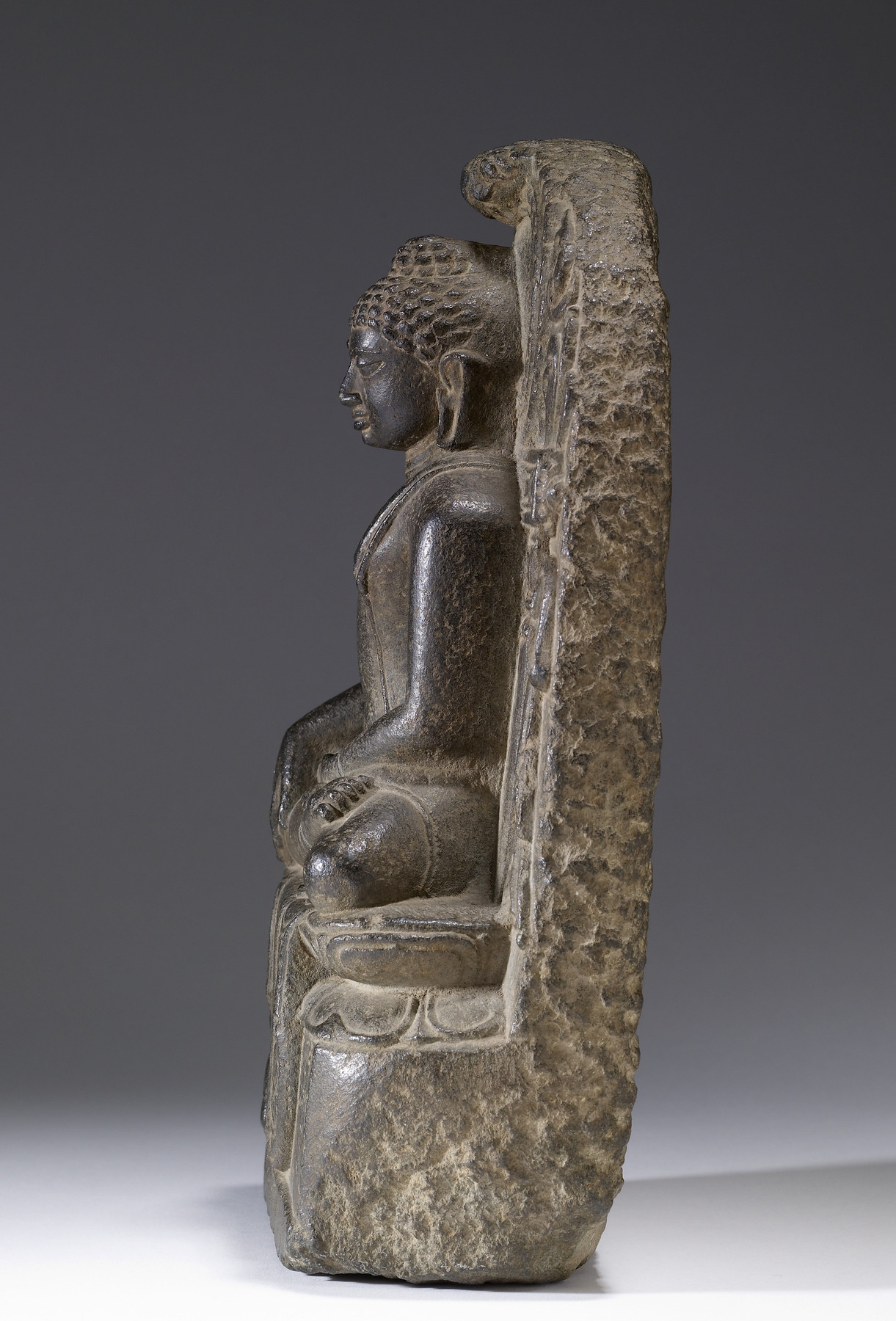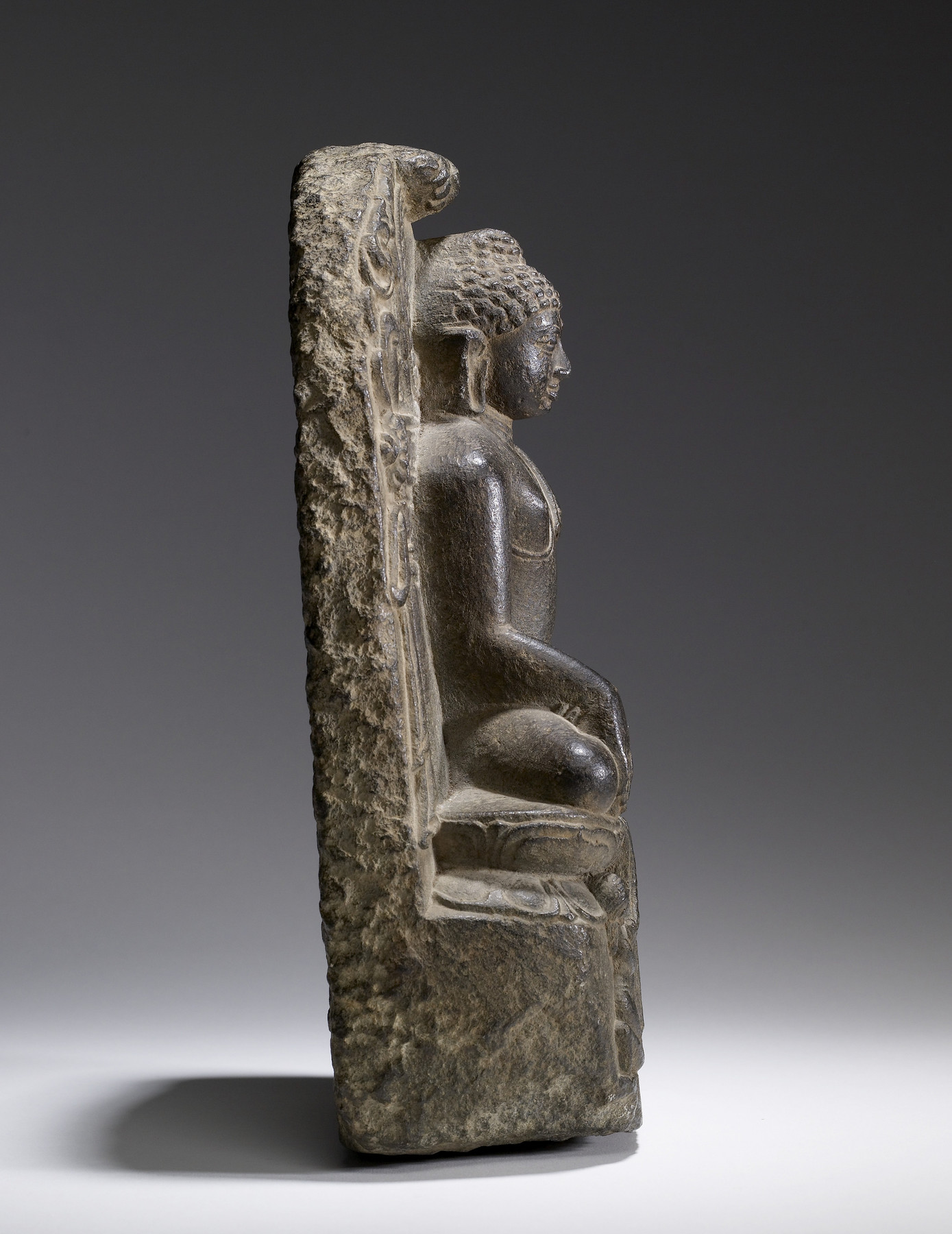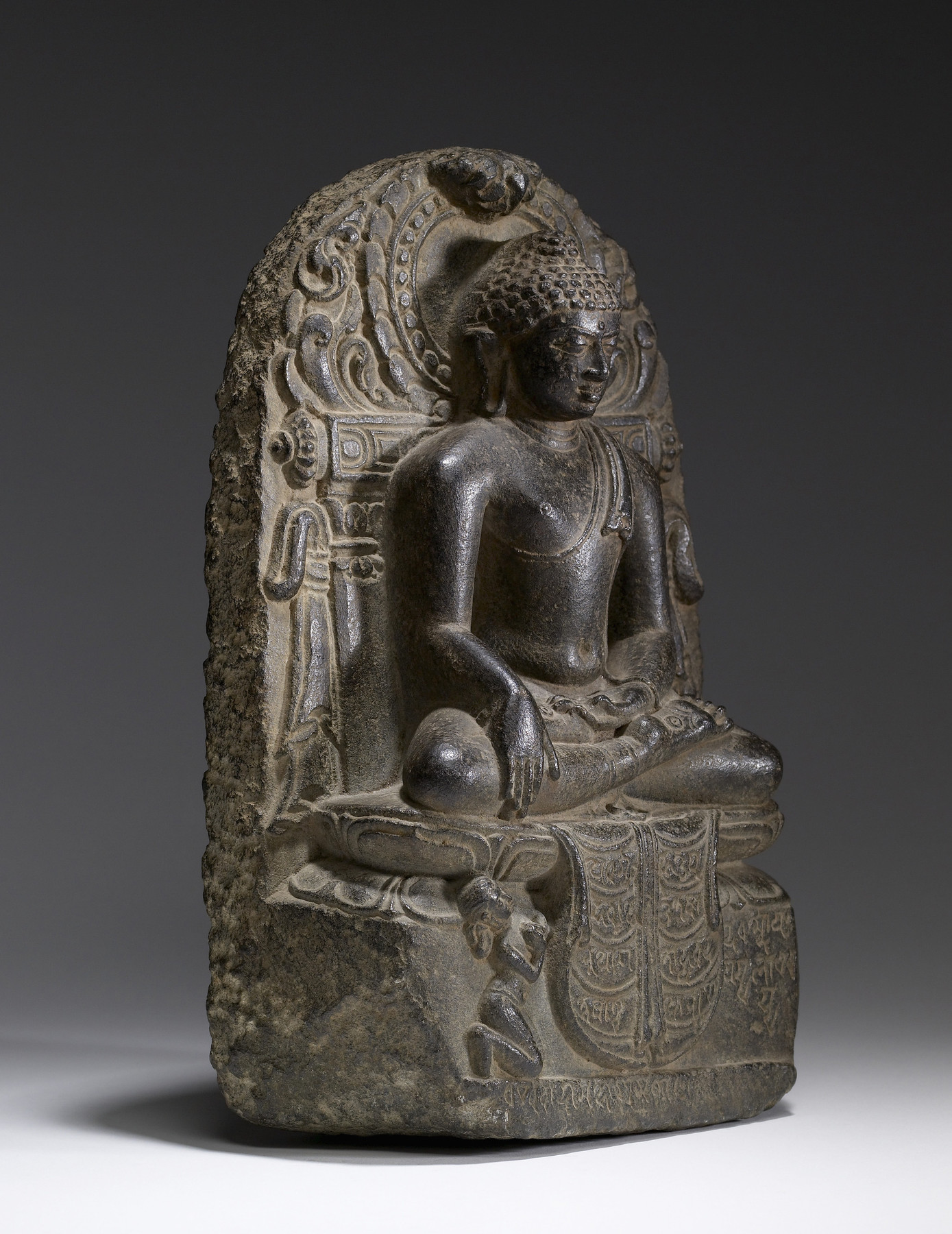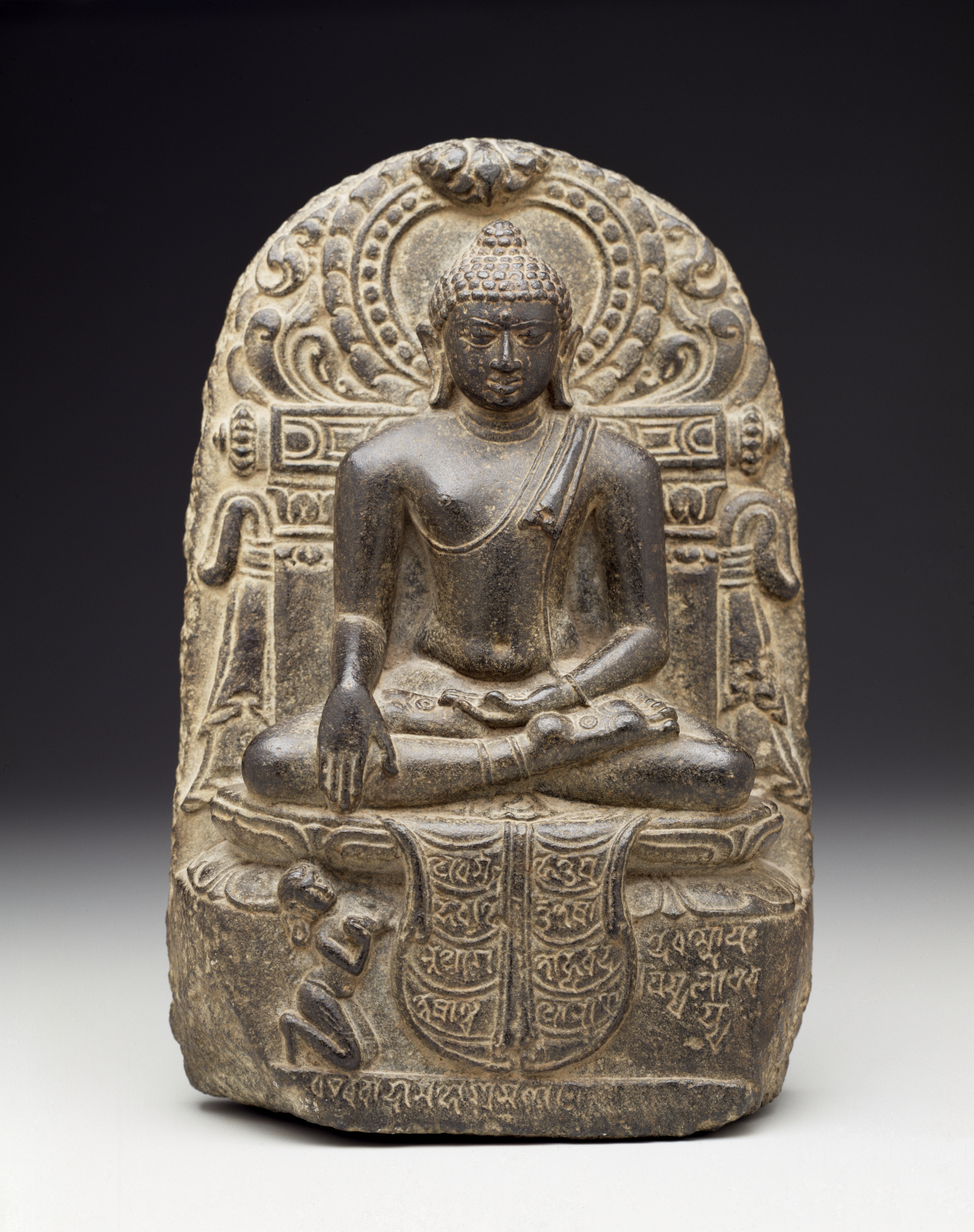Buddha Shakyamuni with Devotee
(India, Nepal, and Tibet)
This small stele, possibly carved as a personal object of devotion, depicts the Buddha Shakyamuni at the moment of enlightenment. Sitting under the Bodhi tree, the leaves of which are just above his head, he reaches down to call upon the earth to witness the event. Just below the hand making the earth-touching gesture ("bhumisparsha mudra"), a kneeling figure gazes up at the Buddha and joins his hands in respect and devotion. This must be Pingalayana, the patron of the sculpture named in the inscription below. The remaining text, carved into the textile draped over the Buddha’s lotus throne and in the space to its right, expresses the principle realized by the Buddha at the time of his enlightenment. Commonly known as the "Buddhist creed," it states that everything trapping us in worldly existence arises from a cause, and that the Buddha has explained the cause and the means to its end—and therefore the means to spiritual liberation.
Inscription
Provenance
Provenance (from the French provenir, 'to come from/forth') is the chronology of the ownership, custody, or location of a historical object. Learn more about provenance at the Walters.
Stuart Perrin, New York; purchased by John and Berthe Ford, Baltimore, March 25 1984; given to Walters Art Museum, 2010.
Exhibitions
| 2001-2003 | Desire and Devotion: Art from India, Nepal, and Tibet in the John and Berthe Ford Collection. The Walters Art Museum, Baltimore; Santa Barbara Museum of Art, Santa Barbara; Albuquerque Museum, Albuquerque; Birmingham Museum of Art, Birmingham; Hong Kong Museum of Art, Hong Kong. |
Geographies
India, Bihar (Place of Origin)
Measurements
H: 11 × W: 7 5/16 × D: 3 7/16 in. (27.9 × 18.5 × 8.7 cm)
Credit Line
Gift of John and Berthe Ford, 2010
Accession Number
In libraries, galleries, museums, and archives, an accession number is a unique identifier assigned to each object in the collection.
In libraries, galleries, museums, and archives, an accession number is a unique identifier assigned to each object in the collection.
25.263

